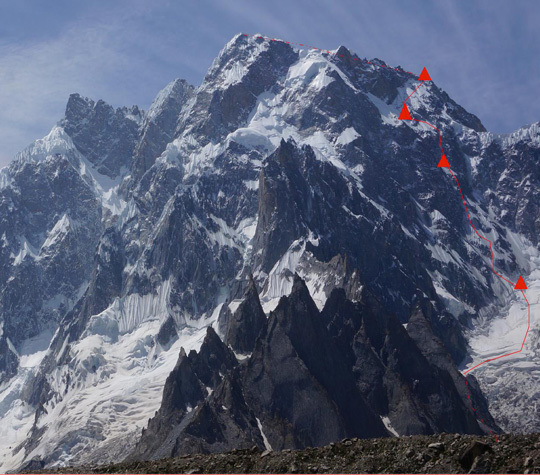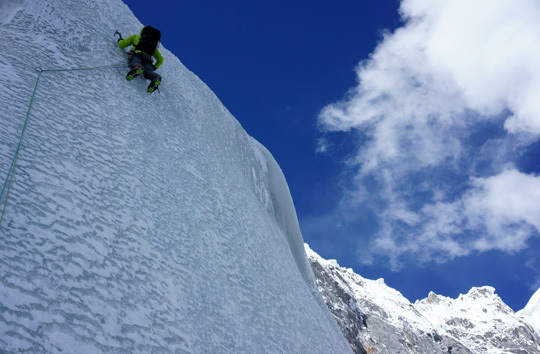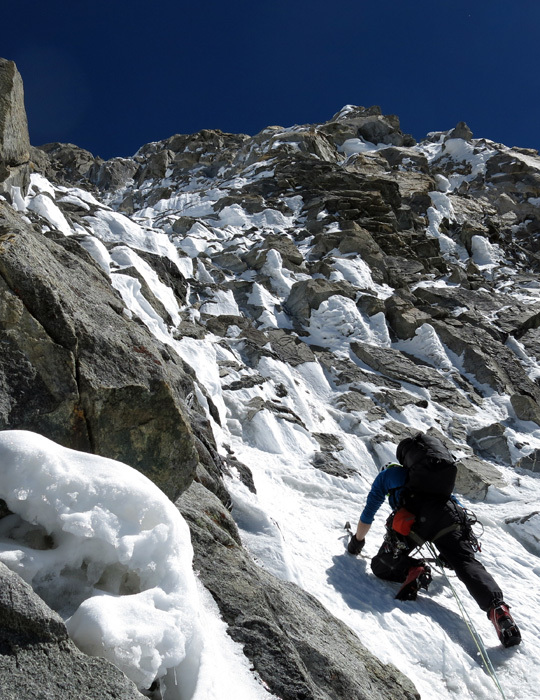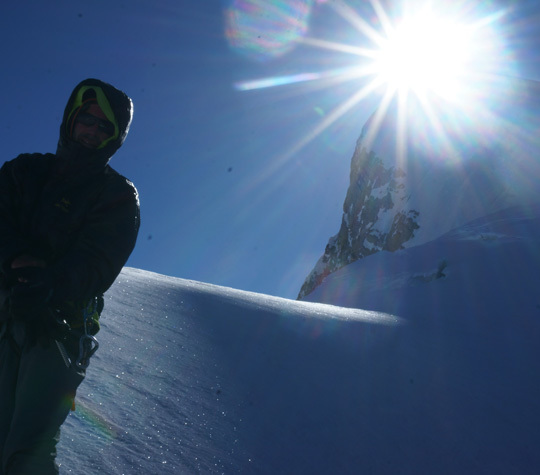
Initially reported in our August 6 newsflash, Rafael Slawinski and Ian Welsted made the first ascent of K6 West in the Charakusa Valley late last month after risking an unusually high level of objective hazard on the approach: long exposure to avalanche danger in a narrow valley, a shifting icefall and a terrorist attack in a neighboring region. On July 29, the pair summited via the northwest face, called “one of the largest yet possible unclimbed pure alpine objectives in all of the world” on their Mugs Stump Award application. The peak held the attention of the alpine climbing community during the 2007 summer climbing season when three stacked teams of well-known alpinists made attempts on K6 West and neighboring K7. By the end of the summer, Vince Anderson, Steve House and Marko Prezelj became the first to summit K7 West (6858m), but the taller K6 West (7100m) remained unclimbed.

Six days of snow impeded House, Anderson and Prezelj; Maxime Turgeon and LP Menard’s attempt on K6 West in 2007. After waiting a few days for the mountain to shed its unstable layers, Anderson, House and Prezelj made a short-lived attempt that ended when they found every option they thought possible obstructed by still more snow.
When a terrorist group attacked base camp on Nanga Parbat the night of June 22 this year, climbers across the Karakoram re-evaluated their plans. Slawinski, Welsted and teammate Jesse Huey were two hours into a 26-hour drive up the Karakoram Highway (KKH) to Skardu when they heard news of the attack, says Huey. The trio returned to Islamabad. From there, Slawinski and Welsted took a plane to Skardu to avoid the KKH while Huey returned home.

“What so few of the people at home realize is the geography and the nature of this area. Chilas, the town that the Taliban came from is only 80 miles as the crow flies from Skardu… However it is 13 hours of travel to get there by minibus. That coupled with the fact Chilas is THE HOT ZONE in Pakistan where one would expect the Taliban and fundamentalist islamics. This all coupled with the fact of increased security and them having to travel through likely 15 police checkpoints, makes it very unlikely that they would venture out of this zone,” Huey reasoned. “Raph and Ian understand that AS DO I, however my family and friends do not. I couldn’t bear putting them through the stress of me being over there and that of the dangers of alpine climbing.”
Slawinski and Welsted travelled the most dangerous terrain of the trip on their trek to and from the peak, Slawinski says. “The approach was a major undertaking, going up an active icefall and then a narrow valley with avy hazard from far above. It was the part of the climb I was most concerned about.”

The duo started up the northwest aspect on July 25, choosing a line that looked to be “almost a continuous ice streak down the face,” says Welsted. Save for the usual spindrift and rockfall, the face was fairly safe and maintains a steady 50-60 degrees as it morphs from ice to sporadic rock bands. (“My calves could tell you more about it!” says Slawinski.) Around 6000m, the climbers encountered a short overhang section that gave Slawinski some trouble on lead, and they lost a day attempting a ridge that turned them around when it narrowed to an unsafe width.
“We initially would have liked to not traverse to the ridge and head more directly for the summit but we saw this line get swept numerous times by full face-length avalanches, whether from serac or cornice collapse we are not sure,” says Welsted. From camp after their failed attempt, the pair downclimbed 100 meters to avoid the ridge, then slog through 700m of loose snow. “Fortunately the snow was perfect consistency and the summit day was relatively easy,” says Welsted.
After a successful first ascent of K6 West, Slawinski encourages prospective visitors to the Karakoram “to look beyond the negative news headlines, and not to paint all Pakistan and all Pakistanis with the same brush.”
